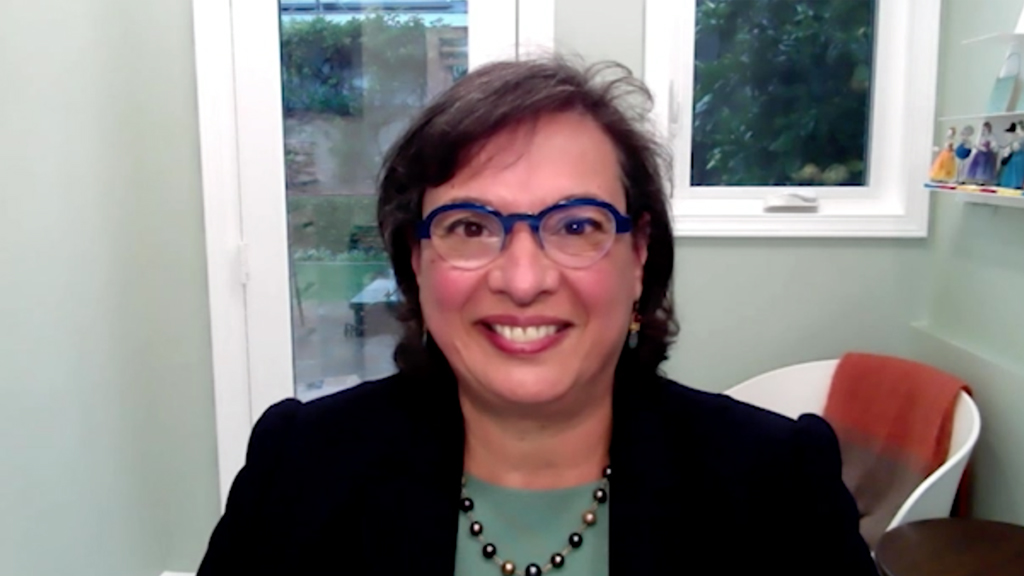
Pulitzer Prize-winning journalist Sonia Nazario has been writing about immigration issues for more than two decades. Among the observations that have influenced her recent reporting and writing is the “quiet transformation” of who is crossing the United States’ southern border. Where once a majority of these migrants came from Mexico, now they largely come from Central America. And instead of single adult men, today, more than half of the nation’s nearly 11 million undocumented immigrants are women and children.
Nazario discussed the growing number of immigrant children and children of immigrants currently in the nation’s public schools and the trauma that many of them have experienced during a presentation Thursday at the NSBA 2021 Online Experience. NSBA’s National Hispanic Council of School Board Members sponsored Nazario as its Equity Signature Speaker.
Twenty-five percent of children in grades K-12 are immigrants or have a foreign-born parent, up from just 6 percent in 1970, said Nazario, a contributing opinion writer for The New York Times. She emphasized that often these children need support to address high levels of depression, anxiety, abandonment, and stressful family dynamics, along with academic assistance.
From the poverty, crime, and abuse they have escaped from, to the traumatic journey north, to their arrival “in such a hostile land in recent years,” many arrive in schools “mentally and emotionally unprepared to learn,” she said.
Nazario, herself the U.S.-born daughter of immigrants from Argentina, told conference attendees about the strength and fortitude required of immigrants to “uproot and leave all the things they dearly know and love to fling themselves into the unknown” and work hard in a strange land. Immigrants bring to the U.S. “incredible grit and determination and an ability to see outside of the box,” she added. “These intangibles have helped lift up our country, have helped make it great over many centuries.”
In her best-selling book Enrique’s Journey (first published as a series of articles when she worked for the Los Angeles Times), Nazario recounted the harrowing true story of a 16-year-old Honduran boy’s desperate effort to reunite with the mother he hadn’t seen in 11 years. She was part of a wave of women who left their home country to find work in the U.S. to support their families.
To reach his mother, Enrique joins “an army” of other poor, unaccompanied minors making their way north by clinging to the sides and tops of freight trains, jumping on and off moving boxcars, and hitchhiking through Mexico. Nazario traveled atop some of the same trains to experience some of Enrique’s 12,000-mile journey, battling the elements, hunger, bandits, and crooked cops out to rape, rob, kill, or deport migrants.
Since first writing about Enrique, the violence in many neighborhoods and towns throughout Central America has exploded, fueled by narcotics cartels, gangs, and corruption, Nazario said. These days, most migrants attempting to cross the southern border “are refugees. They are fleeing persecution, fleeing for their very lives.” The children arriving in the U.S. from Central American “have lived through an undeclared war,” she added.
Nazario notes that she is not “an open borders gal” who thinks that all migration is good. And she is critical of key immigration reform efforts by both Republican and Democratic administrations in recent years, saying “they have not stemmed the flow and kept more people at home, where honestly, most migrants would rather live.”
At the same time, “we must show compassion to asylum seekers at our borders,” Nazario said. “It’s what our laws say we must do. It’s part of our core values as Americans.”
Integrating immigrant students into our schools is one of the biggest challenges of our time, she added. Latinos, for example, “will go from 18 percent of the population to 30 percent by 2045. We will be a majority of the labor force in less than 50 years. These kids will fill the void when boomers like me, and perhaps you, fade away.” That means improving outcomes for Latino and other immigrant students must be made a priority.

Share this content